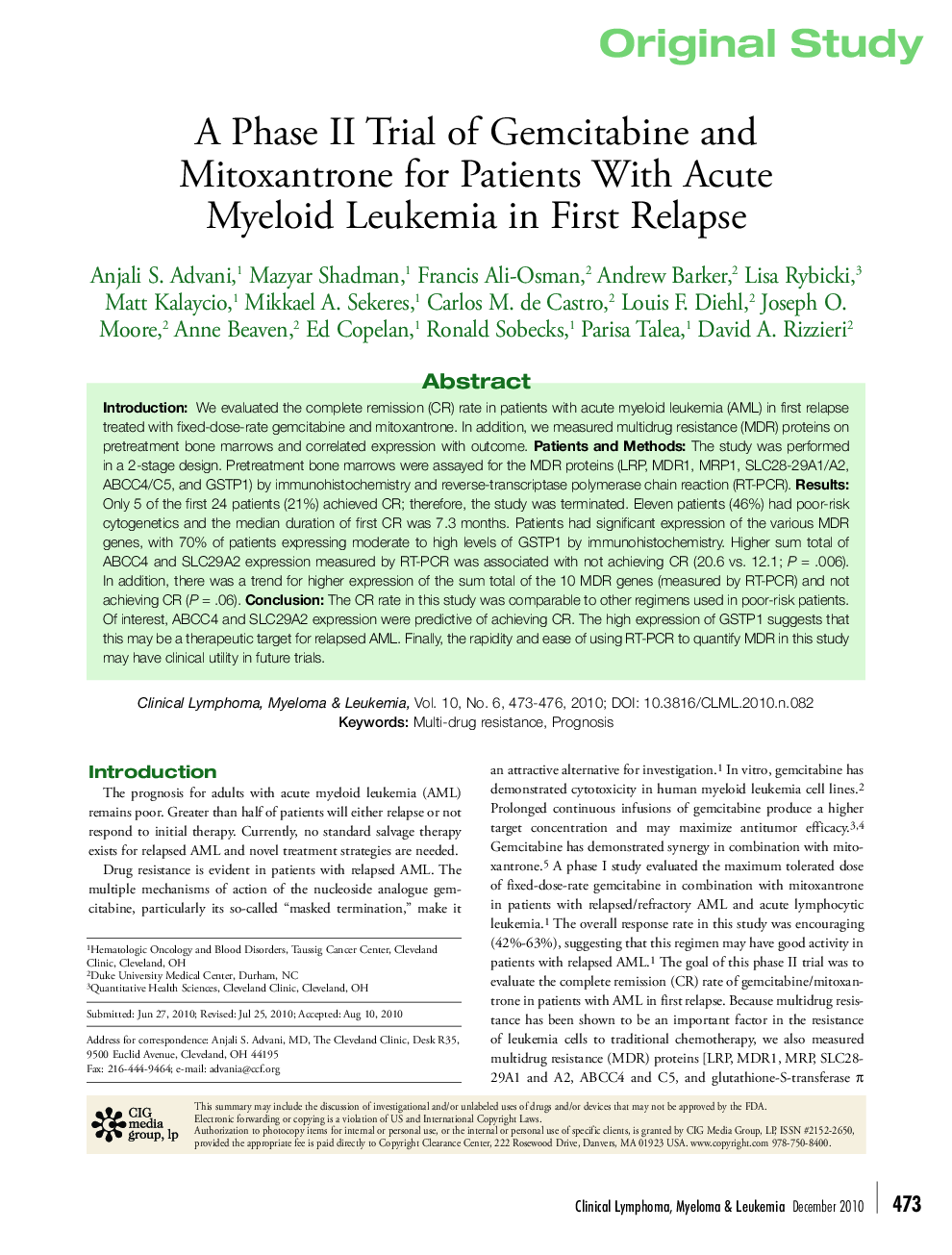| Article ID | Journal | Published Year | Pages | File Type |
|---|---|---|---|---|
| 2754758 | Clinical Lymphoma Myeloma and Leukemia | 2010 | 4 Pages |
IntroductionWe evaluated the complete remission (CR) rate in patients with acute myeloid leukemia (AML) in first relapse treated with fixed-dose-rate gemcitabine and mitoxantrone. In addition, we measured multidrug resistance (MDR) proteins on pretreatment bone marrows and correlated expression with outcome.Patients and MethodsThe study was performed in a 2-stage design. Pretreatment bone marrows were assayed for the MDR proteins (LRP, MDR1, MRP1, SLC28-29A1/A2, ABCC4/C5, and GSTP1) by immunohistochemistry and reverse-transcriptase polymerase chain reaction (RT-PCR).ResultsOnly 5 of the first 24 patients (21%) achieved CR; therefore, the study was terminated. Eleven patients (46%) had poor-risk cytogenetics and the median duration of first CR was 7.3 months. Patients had significant expression of the various MDR genes, with 70% of patients expressing moderate to high levels of GSTP1 by immunohistochemistry. Higher sum total of ABCC4 and SLC29A2 expression measured by RT-PCR was associated with not achieving CR (20.6 vs. 12.1; P = .006). In addition, there was a trend for higher expression of the sum total of the 10 MDR genes (measured by RT-PCR) and not achieving CR (P = .06).ConclusionThe CR rate in this study was comparable to other regimens used in poor-risk patients. Of interest, ABCC4 and SLC29A2 expression were predictive of achieving CR. The high expression of GSTP1 suggests that this may be a therapeutic target for relapsed AML. Finally, the rapidity and ease of using RT-PCR to quantify MDR in this study may have clinical utility in future trials.
